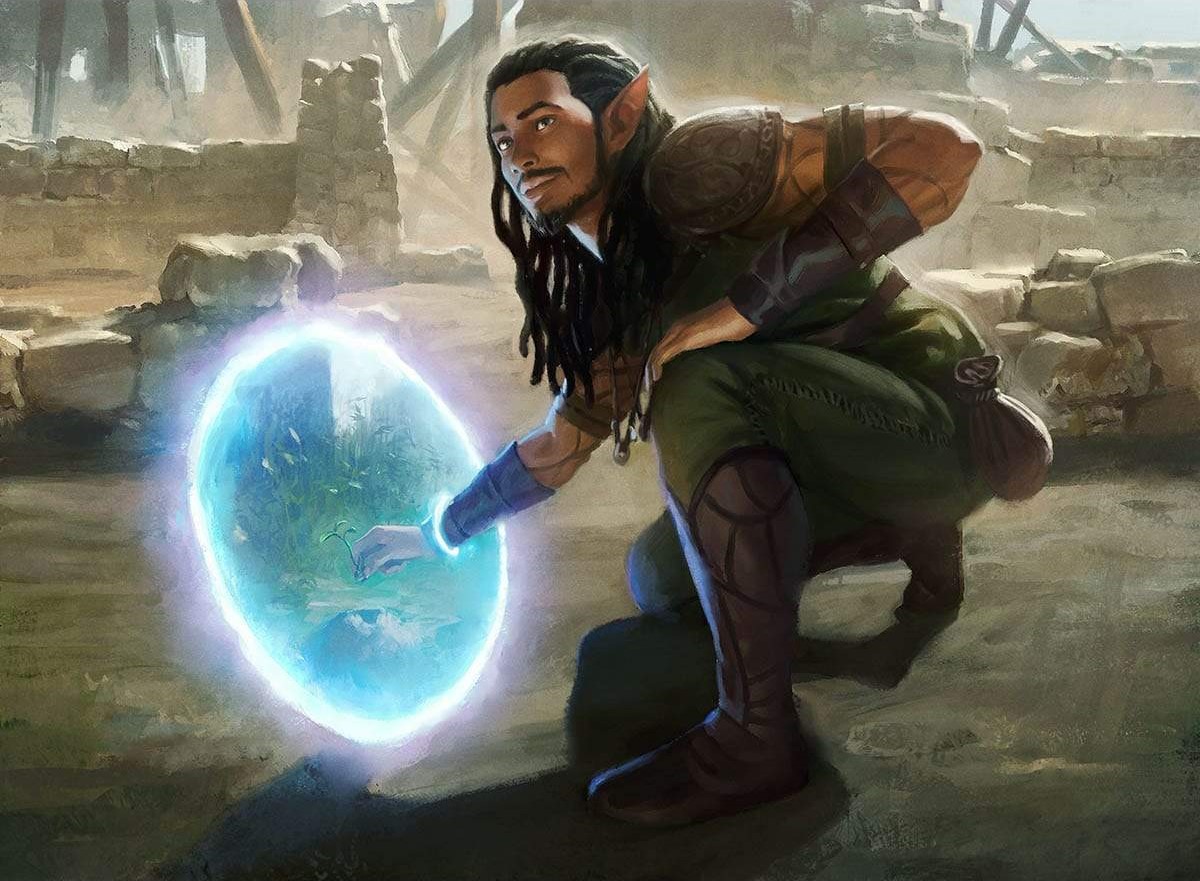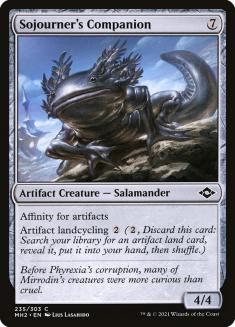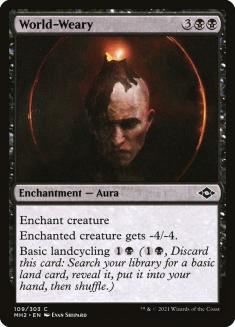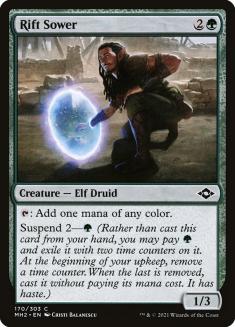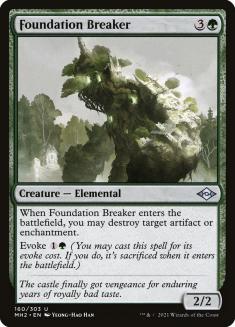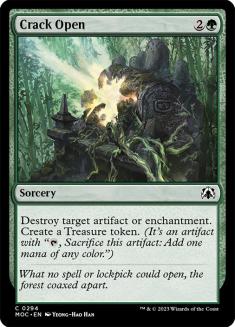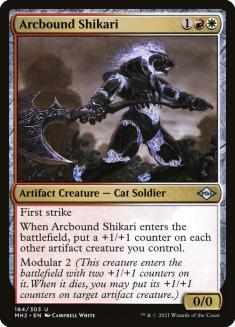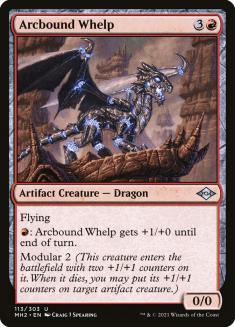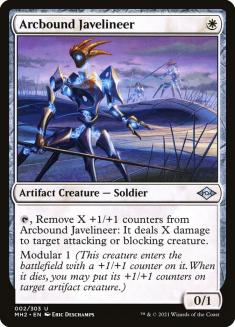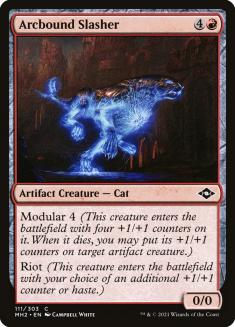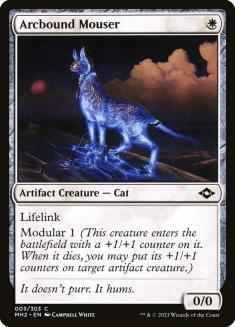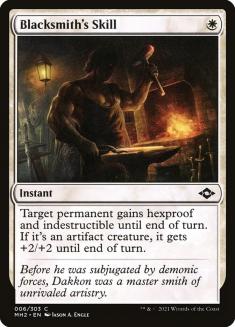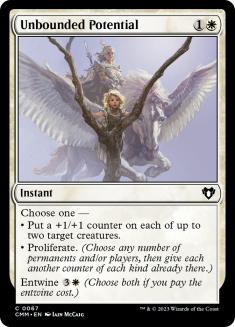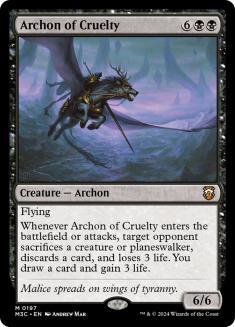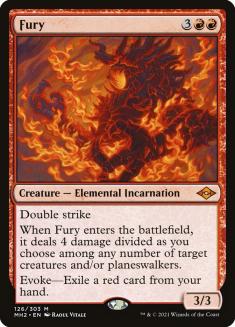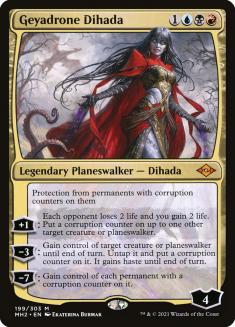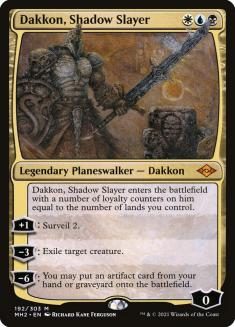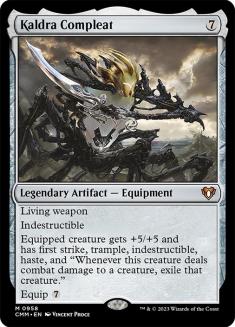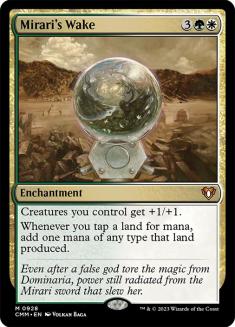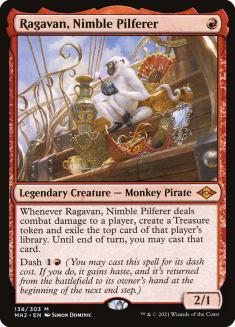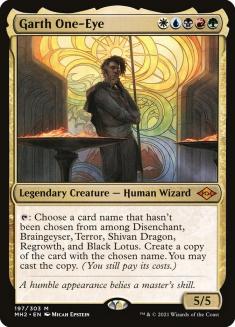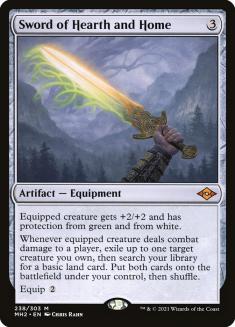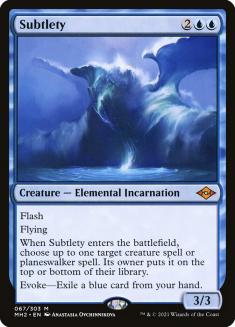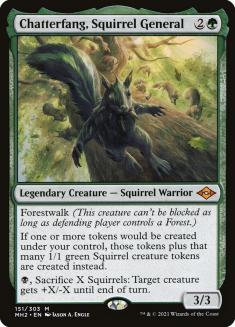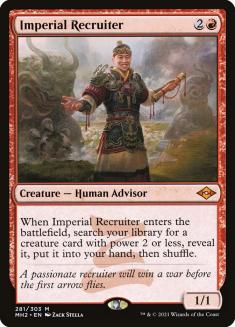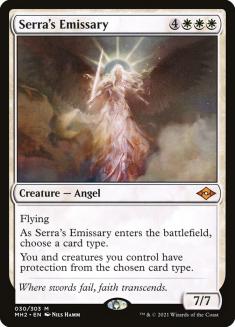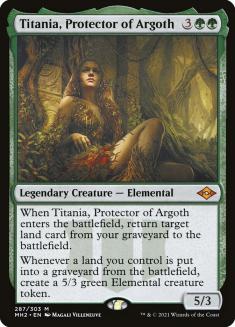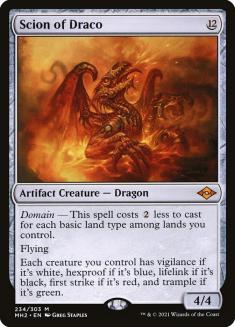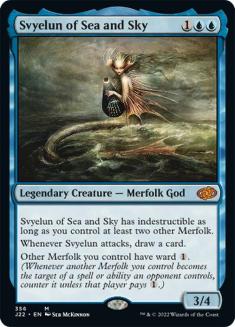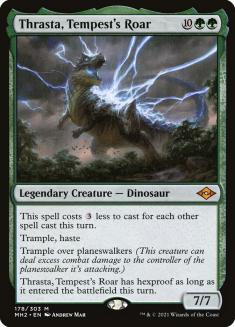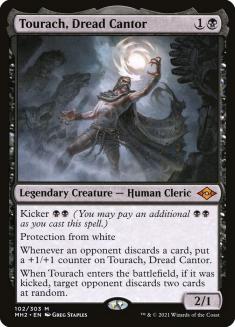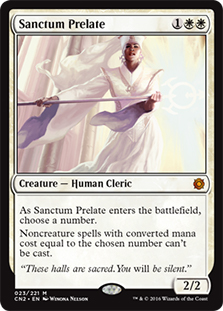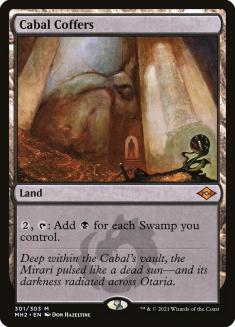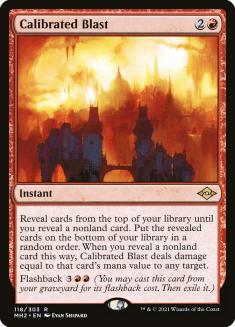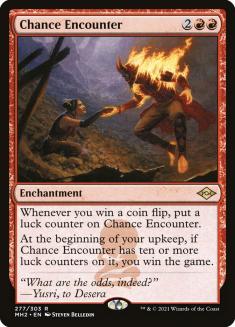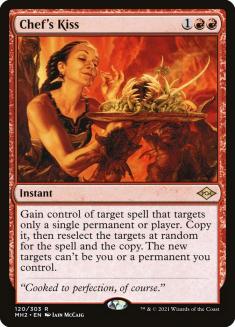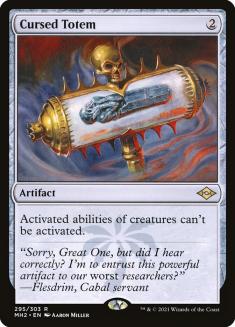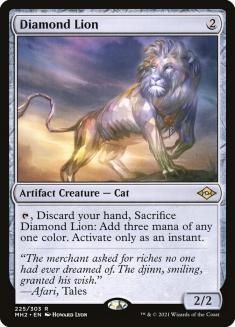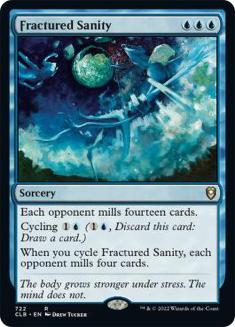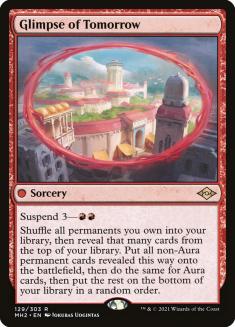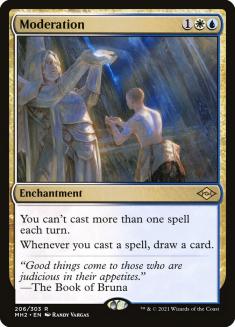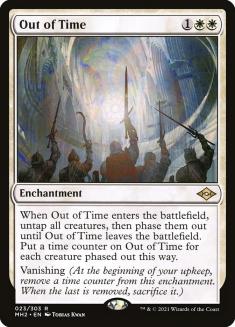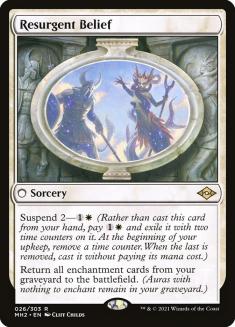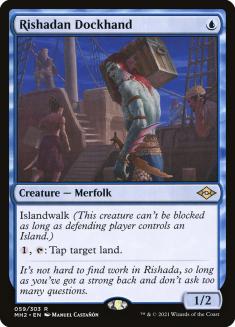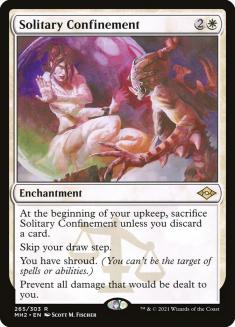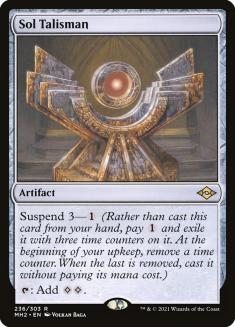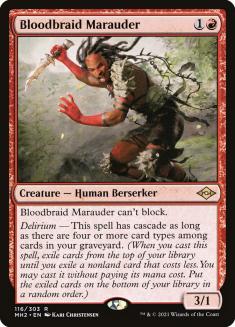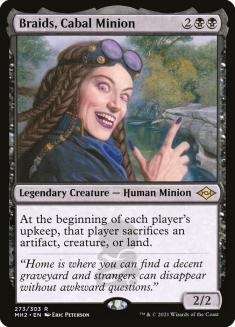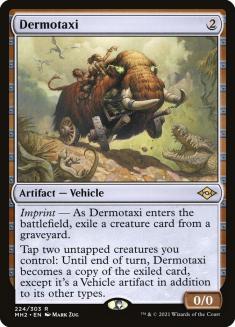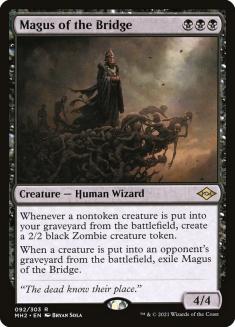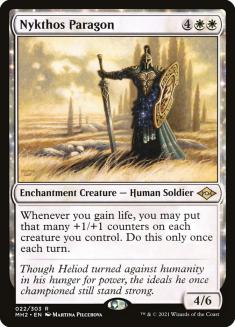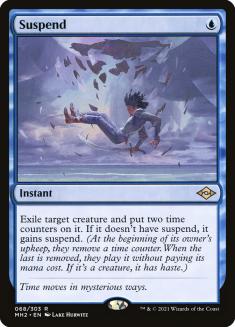I distinctly remember the feeling that I knew what I was doing as I cobbled together a 40-card deck of mostly Rakdos madness cards and watched the “Submit” button go grey in Magic: The Gathering Online (MTGO). I might as well have hit the Worldstar button on my own beatdown, because the next five rounds were brutal. Because I’m a slightly lucky masochist, I wound up 1-4.
Sealed Deck and Draft are two different worlds in Modern Horizons 2 (MH2), perhaps to a larger degree than I can remember over the last decade. But since it feels like ten years since MH2 came out, why am I talking about it now?
$18,000.
That’s the prize, in the form of digital cards, attached to winning the MTGO 20th Anniversary finals this Saturday. The format? MH2 Sealed with a Top 8 Draft. To qualify, you need a Constructed token (which you can still earn playing Pioneer) and a Limited token. The only Limited format left? Also MH2 Sealed.
Unlike most of the grinders I expect to face, for me, learning the Constructed token was my big hurdle. I wouldn’t even play Limited, as I wasn’t Esik-ing a scenario where I put the cat before the cart. After my 4-1 run with Corey Baumeister’s Patreon-only Modern Elementals list, I’ve got twelve shots at four wins in MH2 Sealed.
I’m hoping to get there in one.
For those of you who are stuck with a Constructed token and trying to finagle a way to the finals, I’m here for you. While the set feels like Top Chef, it’s really just Guy’s Grocery Games: get good stuff and play all of it. No need for editing or masochism.
The Path
“Artifact lands are like pizza. Even when they’re bad, they’re pretty good.”
Our goal is to play, at minimum, four colors. It’s fundamentally hedonistic, so we’re going to need a good base to sustain us in the form of artifact lands. A strong pool will feature six or more of these fixing lands, giving you reach into myriad potential color combinations. While Power Depot seems like a natural fit, especially considering potential artifact synergies, I’ve found these decks want to be more “good stuff” and less “archetype-focused.” You can play it, but it’ll be a corner case in terms of effectiveness.
We’re also granted fixing in the form of landcycling from Sojourner’s Companion, Landscaper Colos, World-Weary, Orchard Strider, Mental Journey, and Battle Plan, listed here in my order of effectiveness. Being able to trade in expensive (or less effective) spells for lands is a tried-and-true strategy for winning in Sealed, and MH2 is no exception. Being able to potentially shave a land and run sixteen is a real benefit in a format where haymakers are plentiful and card advantage can be tough to come by. I hate flooding in MH2, and these are nice insurance policies.
What About Creatures?
Finally, we have our weakest contributors in Ornithopter of Paradise, Rift Sower, Ignoble Hierarch, and Sanctum Weaver, listed in order of likelihood you are to have them in your starting deck. All but Hierarch give you whatever dang color you please, come on a body that doesn’t get negated by a single damage, and help ramp you into shenanigans in a format where playing ahead of curve can lead to “chunk” terms where your opponents have to spend mana in ways that are inefficient to answer your speed.
Doesn’t sound weak, right? I’ve found that smart opponents “Bolt the Bird” here because removal is cheap and stumbles have a real pain point associated with them. You should Bolt any Bird you see before Turn 4 if your opponent looks like they’re coming up short on mana variety.
Why We Reluctantly Play Green
Many of the core concepts of green (counters, storm, enchantments, morbid) play out terribly in this format. They rely on us overcommitting to a creature, saving too many plays, synergy in a non-Draft format, or our opponents bing passive, respectively. Still, I find myself scuttling like a Zoidberg to get Forests into my build. Why?
The respective cards are very good and Rift Sower is the rug that ties the room together.
Fae Offering and Tireless Provisioner play to the best of green’s strengths: tokens. Offering is probably the mythic uncommon of the set and is busted with a Sower coming off suspend.
Chitterspitter and Ravenous Squirrel take over games when left unchecked.
Glinting Creeper is exactly what you want out of a midrange play in a multicolor deck, often entering as a 6/6 or better.
Timeless Witness, Wavesifter, and to a lesser extent Orchard Strider give you reach in longer games.
Foundation Breaker and Crack Open answer hard-to-solve equations when it comes to opponent math.
When it comes to your other colors, green seems the least synergistic in terms of gameplan but has the best toolbox. Evaluate your needs and make a call. It’s doing all of the things that you need it to while only Witness and Strider (your late-game plays) ask for a double pip of G to make it work. In fact, the biggest mistake I see is people thinking they need to be base green and going eight green sources or more. Unless you’re relying on Terramorph and the aforementioned mana bodies to fix your deck, don’t stress it.
Wide Themes Ahead
Now that I’m done simultaneously trashing and building up green, MH2 presents us some great opportunities when it comes to blending multiple colors. We have a set that doesn’t implicitly tell us that Jeskai is a build we can have through a signpost uncommon, but it’s there. These wide themes are critical to turning your “good stuff” into “great stuff” with a variety of colors. Again, those colors don’t depend on green.
Before continuing, if you find yourself particularly deep in only two colors because the Sealed gods shined their very specific light upon you, check out my two-color archetypes primer. They’re fairly self-evident and don’t need to be rehashed here.
Jeskai Modular/Affinity
Since I spoiled it, let’s start with our artifact-matters cards. You’re playing artifact creatures that are impervious to removal due to modular and cheating out threats ahead of curve with affinity. This is one of the most aggressive builds you can have, since you’re given cards like Arcbound Javelineer, Arcbound Mouser, and even Myr Scrapling in Abiding Grace builds at the one-drop slot. Other than Dragon’s Rage Channeler, Hard Evidence, and Ravenous Squirrel, there aren’t a lot of playable one-drops that are available before you hit rare. All three of your early artifact creatures scale appropriately with the game.
As important as it is to have early drops, it’s more important to have the right threats to deposit them onto when you need to use an emergency Foundry Helix. Arcbound Tracker plays an essential role in generating counters itself and being an excellent place for them to land, so don’t let the vanilla body fool you. It’s third for a reason.
What Blue Brings
Let’s talk about what blue brings to the table here. If dumping counters matters, Chrome Courier couldn’t be a better target. I love turning a Pilgrim’s Eye into a real threat. Ethersworn Sphinx may not always hit as hard as you want in a low-mana-value deck, but it gives you reach along with Filigree Attendant. Etherium Spinner feels like a miss due to how fast the deck plays, but it does churn out 1/1 artifact flyers in the right deck, so consider your build. Steelfin Whale is always a trap. Overall, this is your complementary color.
Keeping your opponents on their toes is the name of the game here. You hate throwing modular counters on something, only to watch it be removed in response. Blacksmith’s Skill and Unbounded Potential are two of the more underrated instants I’ve seen in the deck. The former keeps your enemy guessing any time you have a white mana up and the latter can lead to serious blowouts, as the +1/+1 counter theme that Selesnya wants to play helps your modular creatures in the late-game. Big combats happen, so sit on either until your opponent lacks open mana.
I’ll note that while this is the fast strategy, it’s not what you’re looking to force if you don’t have a pool that explicitly points you in this direction. I’ve seen too many people tank a good pool trying to play fast but winding up with too few early plays to make it worthwhile. A few modular cards are hard to string together, so be honest with what you have.
Esper Madness/Graveyards
I want to address the elephant in the room: I’m leaving red out of the madness discussion. Blazing Rootwalla and Skophos Reaver absolutely beat down in Draft and I’m happy playing as many as I can get my hands on. In Sealed, I have a hard time playing dedicated Rakdos aggro and think they’re terrible when you don’t draw your build-arounds. Revolutionist is the exception as a late-game splash that can recur cards I’m juuuuuuust about to talk about, but overall, red is the worst overall color in MH2 Sealed. Play your modular creatures and that’s about it.
Moving on.
Reanimator lives through a sweet suite of cards in Graceful Restoration, Karmic Guide, Late to Dinner, Patriarch’s Bidding, Persist, Priest of Fell Rites, and Young Necromancer. You get cool common and uncommon targets to bring back in Archfiend of Sorrows, Glorious Enforcer, and Soul of Migration, with Colos as an okay alternative. It’s frankly a lot.
Why Esper?
So why are we Esper? Blue has a meandering delirium theme that I don’t love, but because of that, blue gets support to discard that fits right in with your overall strategy. It’s like Viagra being invented for blood pressure and eventually finding a higher calling. Dihada’s Ploy is your best splash, being able to go twice in a game, but Lazotep Chancellor also gives you a sweet bonus for doing what you were already doing. These are all cards that give you value in the arduous games of Sealed as opposed to the flash-in-the-pan cards that red would give you.
Discerning Taste is my all star when it coems to finding your threats and keeping you alive. These games don’t tend to run too fast, so gaining life plus finding your reanimation spell while placing the right target in your graveyard is big game. Tizerus Charger feels underpowered as a three-mana 3/2, but consider that during a game where you’re discarding a lot, not all of those pitches will be solid. Everyone gets punched in the mouth a lot, so it can be great to have a reasonable threat when you’re both topdecking.
When I think about traps, Scour the Desert comes to mind. Unless you’re running a few Phantasmal Dreadmaws, there are precious few cards with toughness over five (two other creatures below rare / mythic) that justify running it. Don’t cannabalize your reanimation targets, kids. Scuttletide can be very build dependent but I’m never excited about running it unless my black really screams, “I have madness!” If you have serious curve problems, I would give it the green light.
Sideboard in the Maindeck
I’m huge into flexibility in this format to start the game, as the diversity of threats and length of game sometimes means you’re flat out losing if you can’t answer a persistent value generator. Break Ties is an all-star. Hit a reanimation target, a Fae Offering / Chitterspitter, or just cycle it to win a combat? It’s like a better Verdant Command.
Flay Essence and Unholy Heat (I know, I’m hyping Unohly Heat) hit both creatures and planeswalkers, the latter of which can pose a real problem in a Chess match where everyone is trading all of the time.
Overall, I implore people to leave behind their Best-of-One Arena mentality and go for complete answers in Game 1. You have plenty of time to adapt, but simply not being able to go heads-up against a repeatable effect is death if you’re not fast.
Rankings Because People Love It When You Rank
If you’re in a position where multiple mythics are pulling you in different directions, let this list be definitive and never questioned. Archon of Cruelty is exactly the threat you want when your opponent is gassed, has an immediate effect on the game, and often comes down early. Ragavan, Nimble Pilferer happens to be in a bad color and can be hard to get onto the battlefield Turn 1 with your tapped lands but remains the Monkey Pirate to beat. A couple of build-arounds in Chatterfang, Squirrel General and Svyelun of Sea and Sky wind up lower than you might expect on this list because they exist at the whim of your pool. I’m never trying to have three black mana on Turn 4 for Tourach, Dread Cantor, but it can shine in the right deck.
Rares That Feel Unplayable
As much as I’d love to give you a range of ratings for your rares, Sealed isn’t conducive to that type of scale. Your pool, archetype, and depth will be much more informative. These are your “nope” cards that take too much investment to make worthwhile or are flat-out not made for Limited.
Borderline Unplayables
These are generally cards that need everything to go right for you when cracking your packs or don’t make sense in the main. Dermotaxi has done some serious work for me against Reanimator, but it’s a total dud against modular artifacts, so I’d rather save it for Games 2 and 3 when needed. Asmoranomardicadaistinaculdacar is on this list if there weren’t so many ways to discard in MH2.
Wrapping Up
Overall, I think you’re fine playing a slower game in MH2 Sealed as long as your plays from Turn 3 on have an enters-the-battlefield ability or powerful enough effect you can trigger quickly. Jade Avenger is the perfect example of an early play that often feels like a dud later on but requires you to have too much of your manabase invested in green. Stick to your guns when it comes to building a deck you feel is cohesive and save removal for the real threats, because these games go long. Hopefully, you go late in the tournament.

